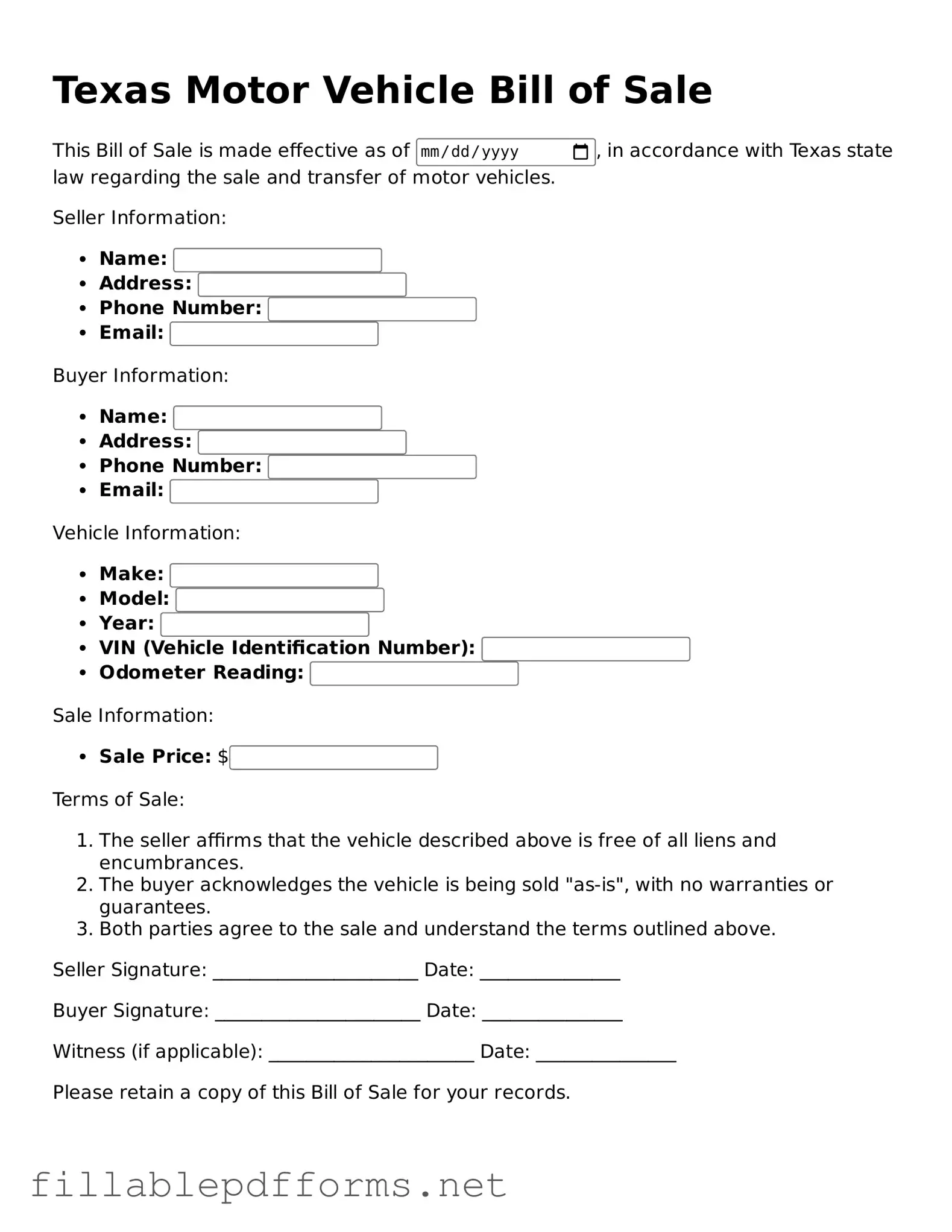The Texas Motor Vehicle Bill of Sale form serves as a crucial document in the process of transferring ownership of a vehicle from one party to another. This form not only provides a written record of the transaction but also protects both the buyer and the seller by outlining essential details related to the sale. Key components of the form include the identification of the vehicle, such as the make, model, year, and Vehicle Identification Number (VIN), which ensures clarity regarding the specific vehicle being sold. Additionally, the form captures the names and addresses of both the buyer and seller, establishing accountability and facilitating future communication if necessary. The purchase price is also prominently featured, along with any terms related to the sale, such as payment methods or conditions for the transfer. Importantly, the form may require signatures from both parties, signifying their agreement to the terms laid out within. By documenting these details, the Texas Motor Vehicle Bill of Sale helps to mitigate disputes and serves as a vital tool for both parties involved in the transaction.
